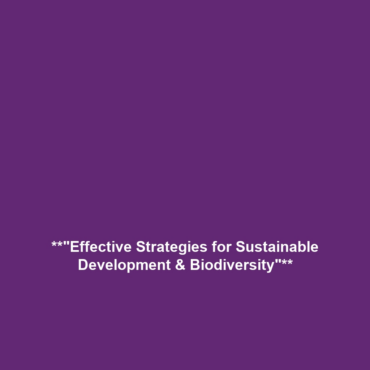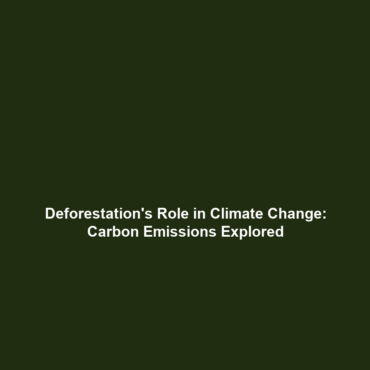Strategies to Support Sustainable Development while Protecting Biodiversity
Introduction
The interrelation between sustainable development and biodiversity protection is increasingly significant in the wake of growing deforestation and biodiversity loss. Sustainable development aims to meet present needs without compromising future generations, while protecting biodiversity is crucial for maintaining ecosystem balance. As ecosystems become increasingly threatened, implementing effective strategies to promote sustainable development while addressing biodiversity loss is imperative. This article explores key strategies, applications, challenges, and future research directions related to this pressing issue.
Key Concepts
Understanding the landscape of sustainable development strategies is essential in combating deforestation and biodiversity loss. Here are some core concepts:
1. Ecosystem Services
These benefits provided by ecosystems include provisioning, regulating, cultural, and supporting services that are vital for human well-being. Integrating ecosystem services into planning is a pivotal strategy to support sustainability.
2. Sustainable Land Use
Adopting sustainable land-use practices, such as agroforestry and low-impact logging, allows for resource extraction without severely impacting biodiversity. These practices contribute to conserving habitats and mitigating deforestation.
3. Policy Frameworks
Implementing robust environmental policies ensures that development projects consider ecological impacts. Policies should integrate incentives for conservation and sustainable practices to safeguard biodiversity.
Applications and Real-World Uses
Several practical applications showcase how strategies to support sustainable development are effectively employed to combat deforestation and biodiversity loss:
- Agroecology: Implementing agroecological methods increases food production while enhancing biodiversity and soil health.
- Community-Based Management: Engaging local communities in resource management fosters both sustainable use of resources and conservation efforts.
- Conservation Agriculture: Practices such as crop rotation and reduced tillage preserve ecosystems and promote biodiversity.
Current Challenges
While the strategies show promise, several challenges persist that hinder their effectiveness:
- Lack of Awareness: Many stakeholders remain uninformed about the importance of integrating biodiversity measures into development.
- Conflicting Interests: Economic development often takes precedence over conservation, leading to unsustainable practices.
- Policy Gaps: Inadequate enforcement of environmental regulations allows for continued deforestation and habitat degradation.
Future Research and Innovations
Looking ahead, several exciting innovations and research initiatives are anticipated to enhance strategies supporting sustainable development while protecting biodiversity:
- Biotechnology: Advances in genetic engineering can aid in developing disease-resistant plant varieties, promoting sustainable agriculture.
- Remote Sensing: Technologies like satellite imagery enable improved monitoring of land use changes and biodiversity health.
- Ecological Restoration: Research into restoring degraded ecosystems presents long-term solutions for biodiversity recovery.
Conclusion
In summary, the need for strategies that support sustainable development while protecting biodiversity is paramount in addressing the challenges posed by deforestation and biodiversity loss. By focusing on ecosystem services, implementing sustainable land-use practices, and fostering strong policy frameworks, we can protect our natural heritage while promoting development. As we progress, further research and innovation will be crucial in overcoming existing challenges and enhancing the effectiveness of these strategies. Explore more about sustainable practices and biodiversity conservation here.

